#fengguan
Text

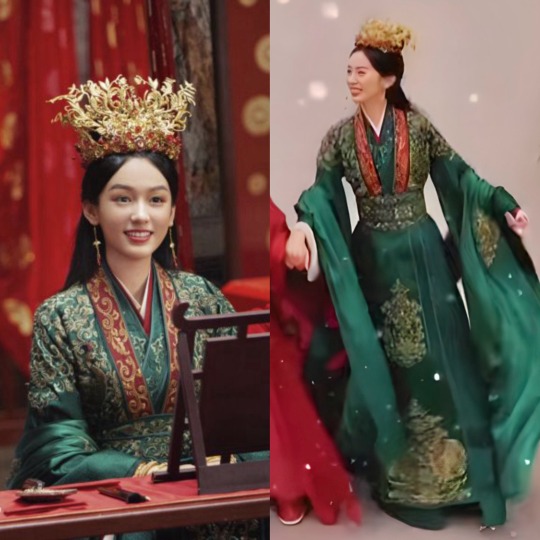


Green and Red wedding Hanfu
Wuxia and Xianxia costumes usually combine historical Hanfu designs and their own modern-fantasy twists.
1st drama: Word of Honor 山河令
2nd drama: A Female Student Arrives at the Imperial College 国子监来了个女弟子
3rd drama: Beauty of Resilience 花戎
#china#chinese culture#east asia#chinese history#cdrama#chinese drama#hanfu#wedding hanfu#ming dynasty portrait#word of honor#art#Phoenix crown#fengguan
299 notes
·
View notes
Text




Ming Dynasty Hanfu Wedding Costume Modeling - Phoenix Crown
Work of LINSEA PHOTO Studio
133 notes
·
View notes
Text
Friendly reminder that the al Ghuls are East Asian. Yes they are Arabic, but they are also East Asian. Several origin stories had put Ra's birthplace in East Asia.
Don't let DC just kill that because of the shitty "we don't need multiple East Asian characters in the family" idea media has.
So yeah start letting Damian speak Chinese, Mongolian, Burmese, and/or other languages that are associate with lands that were associated with the Mongolian Empire (which Ra's has repeatedly claimed to have been prominent in)
Talia's sometimes portrayed as over a hundred years old. Let her wear Cheongsam and Fengguan's when she marries Bruce.
#Damian Wayne#Talia al Ghul#Batfam#Batman#League of Assassins#“The al ghuls have some East Asian heritage” is arcane knowledge in batfandom
958 notes
·
View notes
Video
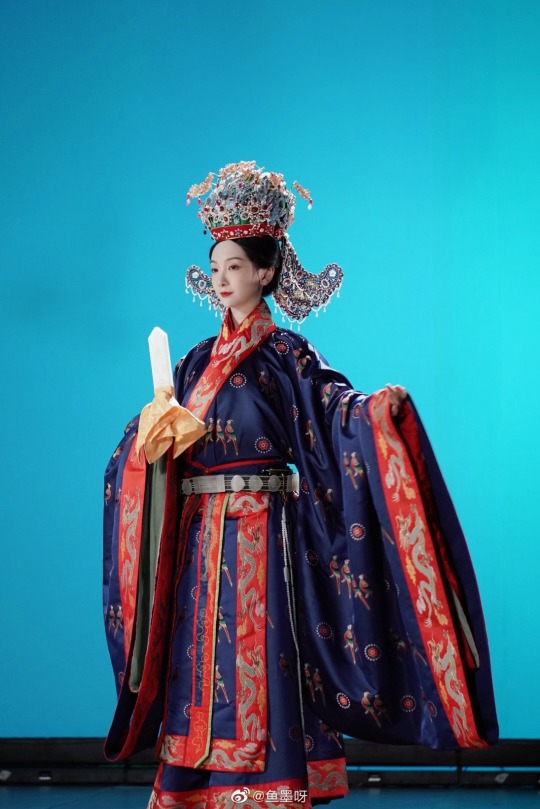
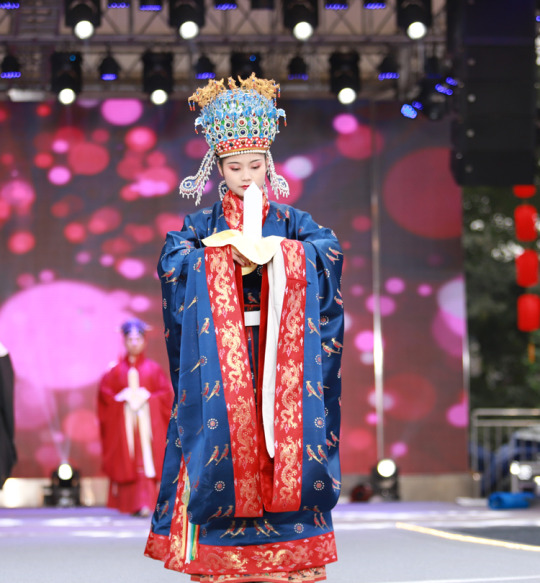


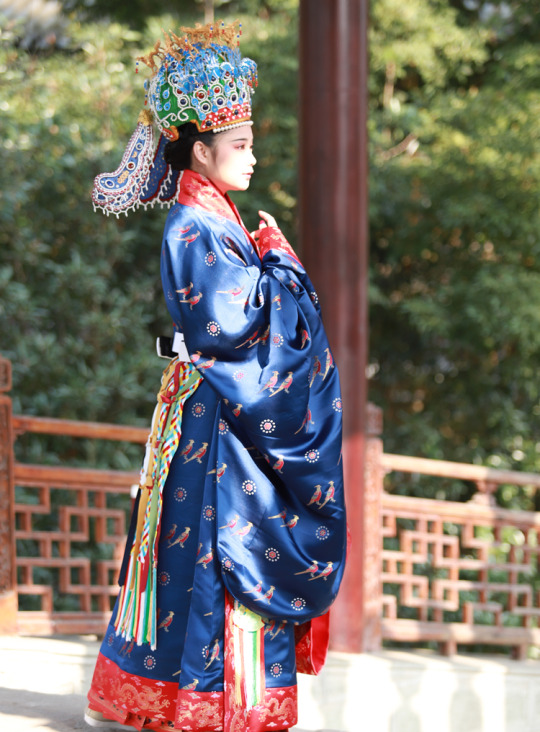
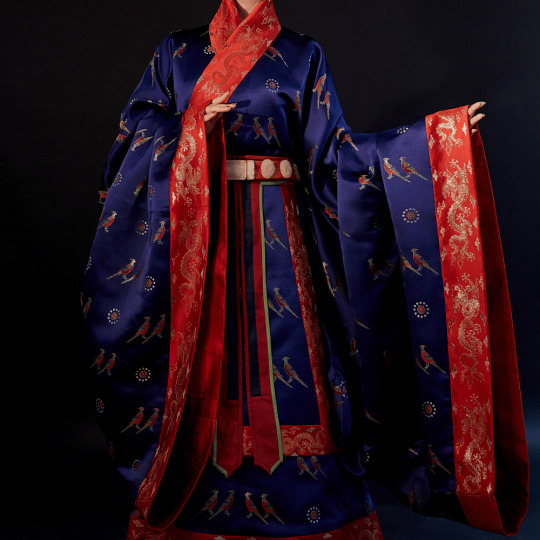

【Historical Artifact Reference】:
Ming Dynasty Royal Portrait:
・Portrait of Empress Xiaoduanxian (Chinese: 孝端顯皇后; 7 November 1564 – 7 May 1620) In ceremonial dress (翟衣/di yi)
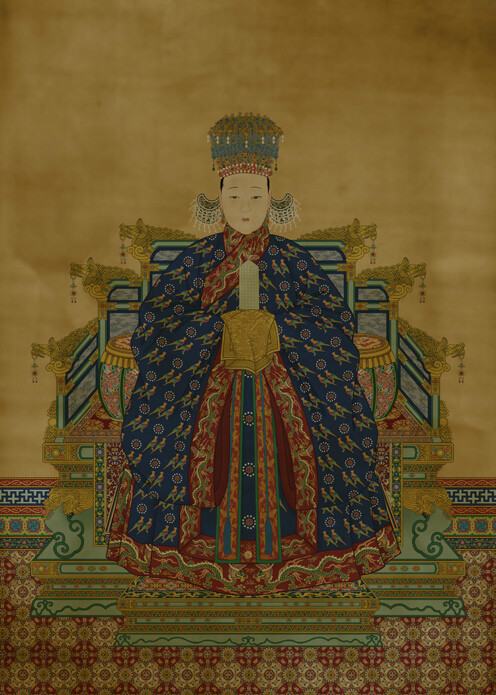
・Nine Dragons and Nine Phoenix Crowns of Empress Xiaoduanxian (※This Phoenix Crowns only for important ceremonial occasion which call “礼冠/Li Guan” wear with ceremonial dress(翟衣/di yi)
----
Unearthed from Ming Dynasty royal mausoleum Ming Dingling (明定陵) , is a mausoleum wehre Wanli Emperor, together with his two empresses Wang Xijie and Dowager Xiaojing, was buried.
In addition to this phoenix crown, the Empress has another phoenix crown for other occasions.
----
Collection of the National Museum of China.
This phoenix crown is 35.5 cm high, 20 cm in diameter, and weighs more than 2,000 grams. It is inlaid with hundreds of high-quality gemstones of various colors and decorated with more than 5,000 fine pearls.




[Hanfu・漢服]Chinese Ming Dynasty Traditional Clothing Hanfu (翟衣) & Phoenix Crown (鳳冠) Reference to Ming Dynasty Relics & Empress Portrait
—–
【History Note】
Diyi (Chinese: 翟衣), also called known as huiyi (褘衣) and miaofu (Chinese: 庙服), is the historical Chinese attire worn by the empresses of the Song dynasty and by the empresses and crown princesses (wife of crown prince) in the Ming Dynasty.
The Diyi also had different names based on its colour, such as yudi, quedi, and weidi. It is a formal wear meant only for ceremonial purposes. It is a form of shenyi (Chinese: 深衣), and is embroidered with long-tail pheasants (Chinese: 翟; pinyin: dí or Chinese: 褘; pinyin: hui) and circular flowers (Chinese: 小輪花; pinyin: xiǎolúnhuā). It is worn with guan known as fengguan (lit. 'phoenix crown') which is typically characterized by the absence of dangling string of pearls by the sides. It was first recorded as Huiyi in the Zhou dynasty(1050–221 BCE).
The Diyi follows the traditional Confucian standard system for dressing, which is embodied in its form through the shenyi(深衣) system. The garment known as shenyi(深衣) is itself the most orthodox style of clothing in traditional Chinese Confucianism; its usage of the concept of five colours, and the use of di-pheasant bird pattern.
【 Influence to Other Country】
Korea
Korean queens started to wear the Diyi (Korean: 적의; Hanja: 翟衣) in 1370 AD under the final years of Gongmin of Goryeo,when Goryeo adopted the official ceremonial attire of the Ming dynasty. Same as the early Korea Joseon, were bestowed by the Ming Dynasty.
According to the Annals of Joseon, from 1403 to the first half of the 17th century the Ming Dynasty sent a letter, which confers the korea queen with a title along with the following items: 翟冠(Ming womens whose husband held the highest government official posts can wear this kind of crown,different from Ming Empress Phoenix Crown 鳳冠), a vest called 褙子(Beizi), and a 霞帔(Xiapei). However, the Diyi sent by the Ming dynasty did not correspond to those worn by the Ming empresses as Joseon was considered to be ranked two ranks lower than Ming.
Instead the Diyi which was bestowed corresponded to the Ming women's whose husband held the highest government official posts. In the early Ming Dynasty period, the Diyi were given to Korea Joseon By Ming, but after the Ming Dynasty reformed the clothing system, The Ming Dynasty bestow the 大衫( Dà shān) to the Korean queen instead of Diyi. The Diyi worn by the Korean queen and crown princess was originally made of red silk; it then became blue in 1897 when the Joseon king and queen were elevated to the status of emperor and empress.
it then became blue in 1897 when the Joseon king and queen were elevated to the status of emperor and empress.
After the fall of the Ming Dynasty, the system of China granting clothing to Korea was interrupted. Korea Joseon were forced to become tributary state of the Qing Dynasty. Korea Joseon carried out "nationalization" based on the costumes bestowed by the Ming Dynasty in the past. But according <Veritable Records of the Joseon Dynasty Volume 46> "嬪宮冊禮時, 旣有翟衣, 則當有翟冠, 而我國匠人不解翟冠之制。 考諸《謄錄》, 則宣廟朝壬寅年嘉禮時, 都監啓以: ‘七翟冠之制, 非但匠人未有解知者, 各樣等物, 必須貿取於中朝, 而終難自本國製造, 何以爲之?’ 云則宣庙有: ‘冠則制造爲難。’ 之敎。 “
Although Korea Joseon has Diyi,but no craftsman know how to make 翟冠(Di Guan), and the materials needed for make 翟冠(Di Guan) need to be taken from China (which need money for that). After all, it is difficult to manufacture in Korea. Therefore, Korea Joseon has not worn 翟冠(Di Guan) since the fall of the Ming Dynasty and change it to 대수머리(大首머리)
Korea "nationalization" process↓
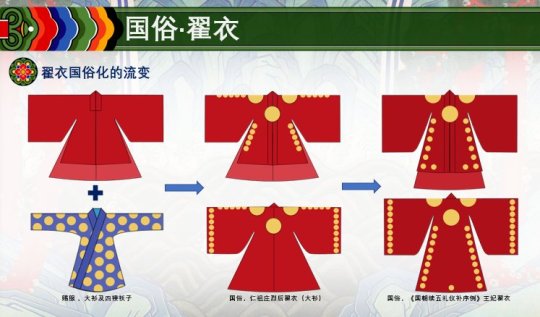
대수머리(大首머리)

Japan
In Japan, the features of the Tang dynasty-style huiyi was found as a textile within the formal attire of the Heian Japanese empresses.
————————
📝Recreation Work & Hanfu: @执月传统服饰 & @鱼墨呀
📸Photo: @执月传统服饰 & @鱼墨呀
🛍️Tabao:https://item.taobao.com/item.htm?spm=a230r.1.14.16.1edc69a6bumOJ8&id=636369495576&ns=1&abbucket=16#detail
🔗Weibo:https://weibo.com/7454398796/K4mehzhsg
————————
#Chinese Hanfu#Ming Dynasty#chinese fashion history#Chinese Culture#Phoenix Crown 鳳冠#Di yi/翟衣#chinese#chinese historical fashion#Empress Xiaoduanxian#Nine Dragons and Nine Phoenix Crowns#Sinosphere#hanfu history#China History
343 notes
·
View notes
Text
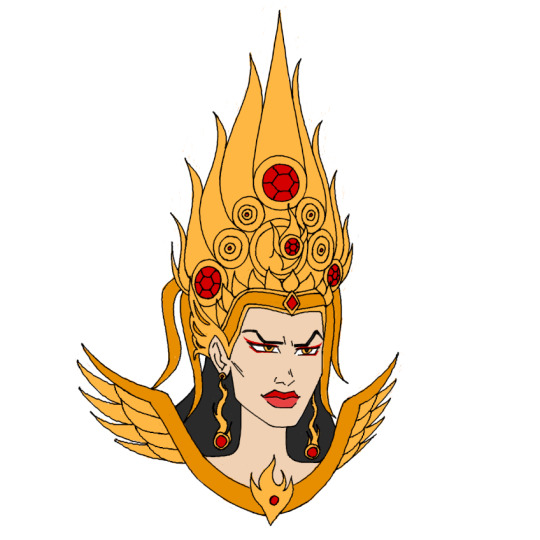
"Just as the world will be reborn in fire, I shall be reborn as the supreme ruler of the world. From this moment on, I will be known as the Phoenix Queen!"
Concept sketch for "Phoenix Queen" Ozai.
In my previous sketch of female Ozai, her crown as Fire Lord is inspired by Chinese fengguan. Since this crown is already intricate, her crown as "Phoenix Queen" needs to be even more elaborate. To embody her vanity, madness, and megalomania, I took inspiration from apsara crowns. By appropriating the costume of an apsara, she visually declares herself an all-powerful goddess of fire. I felt this was fitting, as in ATLA Ozai appropriates Buddha imagery to create a cult of personality that carries into the comics.
The crown that sketched here is not entirely accurate to an apsara crown. Here it is depicted as an enormous, continuous crown, fused together with gold. There are a couple of reasons I decided to do this, but the main reason is because of a scene which occurs in the TV series finale. Before Ozai fights Aang, there is an impressive shot where he is shown standing on an air balloon. In the genderbent AU, I picture female Ozai standing in the same position, wearing this massive crown. From a distance, it should appear like she is wearing a massive flaming bird on her head, or a mass of comets. This was easier to achieve by making her crown a single, fused unit. Additionally, I picture her tearing off her crown in a single smooth moth, then burning off her cape in the moments before her fight with "Aangi". This is also easier to pull off if her crown is a single, fused unit. While this design is not culturally accurate, I think it is appropriate, as she is exploiting the imagery of benevolent goddesses for evil purposes.
Depending on how you view it, her crown is supposed to look like fire, comets, or a flaming phoenix. So much gold and jewelry is employed that it might look garish. When she is turned to the side, the centerpiece of her crown should resemble the head of a phoenix. When viewed from the front, it should resemble a comet, or the Fire Nation symbol that Iroh draws in the sand.
By taking inspiration from Southeast Asian cultures, I hope it helps divorce her from association with Wu Zetian. I don't think it would be appropriate to only have the villains inspired by Southeast Asian cultures, which is one of the reasons why I also took inspiration from Southeast Asian cultures when designing "Zuka""s comics outfit. These decisions are meant to pay homage to the rich heritage of Southeast Asian cultures, rather than associating them with villainy.
An earlier iteration of this design was more inspired by the naga crowns worn by depictions of Queen Soma, where the naga heads were replaced by phoenix tailfeathers. I decided against this, as Queen Soma was a real person and it felt disrespectful to her legacy.
To differentiate her from an adult Azula, I've drawn female Ozai with a more square facial structure, and red eye makeup.
Here is what her hairstyle looks like without the crown:
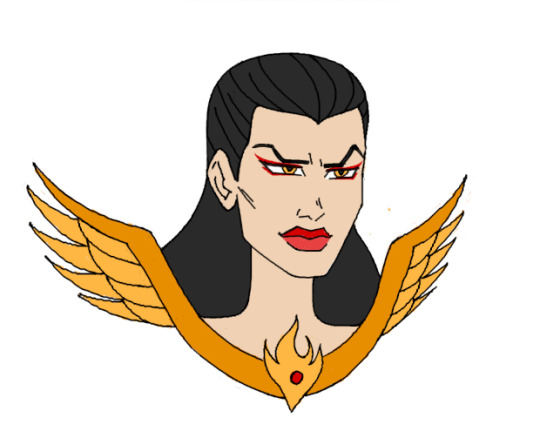
Like what I’m doing? Consider leaving me a donation via Ko-Fi.
#ozai#atla genderbender#avatar the last airbender#gender bender#genderswap#rule 63#genderbend#genderbending#my art#my headcanons
7 notes
·
View notes
Text
Diyi

The historical attire worn by the empresses of the Song dynasty and by the empresses and crown princesses in the Ming dynasty. It is a form of shenyi and is embroidered with long-tail pheasants and circular flowers. It was worn with a guan known as a fengguan which is typically characterized by the absence of dangling string of pearls by the sides.
47 notes
·
View notes
Photo

Westminster Halo Tiara, Lacloche, 1930, part of the “Power & Image: Royal & Aristocratic Tiaras” Exhibition at Sotheby’s. The tiara is designed as a halo to be worn over the crown of the wearer's head and extending outwards in the manner of a traditional Chinese headdress,
The tiara takes inspiration from the traditional Chinese Fengguan and Kuitou headdresses but infuses it with modern, angular motifs and sleek baguette- and marquise-cut diamonds. It was most notably worn by the 3rd Duke’s wife Loelia Ponsonby, whom Cecil Beaton photographed wearing the tiara. The Duke’s second wife, Anne Sullivan, later wore the tiara to the coronation of Elizabeth II in 1952.
The tiara was originally created to showcase three exceptional diamonds: the Hastings diamond, and the two pear-shaped Arcot diamonds. The original tiara design featured the three impressive diamonds alongside some 1,400 smaller diamonds.
In June 1959, the tiara was bought by Harry Winston at Sotheby’s for £110,000 – a price that broke the world record at the time for a piece of jewellery sold at auction. He removed the Arcot and Hastings diamonds, recut them and sold them each as solitaire rings. (The tiara is now struck on the reverse with Harry Winston’s maker’s mark beside the setting). At one point, cabochon turquoise stones were set in the diamonds’ place – the tiara in this version was worn by Rose Movius Palmer, an American artist. The tiara can even be taken off its frame and worn as a necklace, as was demonstrated by Rockstar Alice Cooper in 1973 in an iconic photograph with Salvador Dalí. In October 1988, Sotheby’s once again sold the tiara, and the Arcot and Hastings diamonds continued to be sold and re-set into various forms such as a pendant created by jeweller Van Cleef & Arpels.
In its present form, the tiara has been redesigned to feature clusters of circular-, baguette-, marquise-cut, cushion- and pear-shaped diamonds in place of the original historic diamonds.
Source: Sotheby’s
See below for examples of it being worn
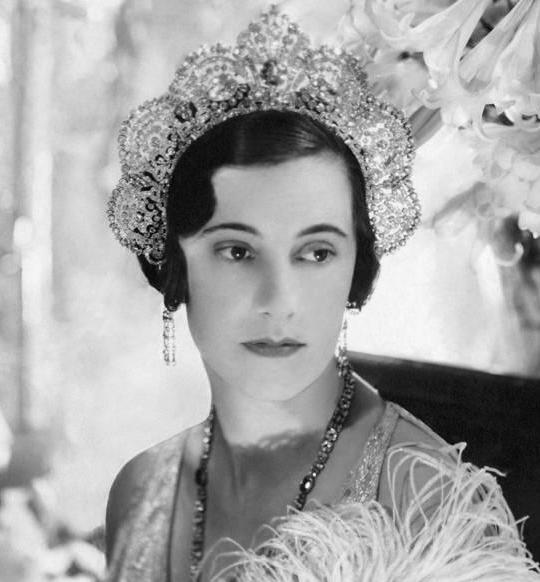

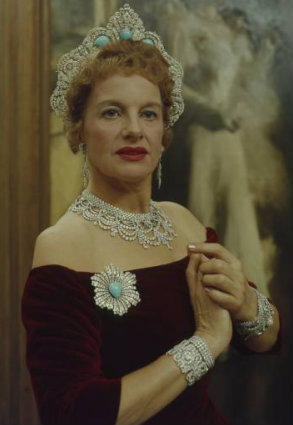

108 notes
·
View notes
Text
Aesthetics of fengguan of Empress Dowager Zhang

7 notes
·
View notes
Text
China Masterlist 🏮
Umbrella Terms
Huafu (any clothing originating in China)
Hanfu (Han-Chinese ethnic clothing)
Hanyuansu (western clothing inspired by hanfu)
Modified Hanfu
Wedding Hanfu
Winter Hanfu
~~
General Hanfu Terms
Men’s Hanfu
Mianfu (emperor’s clothes)
Dachang (male equivalent of a pifeng)
Yichang
Yuanlingpao
Qiyao Ruqun (Parallel Collar) (Crossed Collar)
Moxiong (undergarment for women)
Shan
~~
Han Dynasty + Wei/Jin Dynasties
Quju
Danyi (sheer coat for shenyi)
Shenyi
Zhiju
~~
Tang Dynasty
Daxiushan (lit. big sleeved shirt)
Banbi (Tang Dynasty beizi)
Banxiu
Tanling (U-collared shirt)
Qixiong Ruqun (chest-high ruqun)
Yaoqun
Heiziqun
Hezi
~~
Song Dynasty
Beizi (narrow-sleeved coat with slits on the side)
Beixin (sleeveless version of the beizi)
Moxiu (similar to a shan but the sleeves are wider and shorter)
Lanshan
Xiapei
Baidiequn
Song-style Pants
~~
Ming Dynasty
Pifeng (big sleeved coat)
Bijia (sleeveless version of a pifeng)
Zhaojia (male equivalent of a bijia)
Changshan
Zhuyao
Mamianqun (horse-faced skirt)
Aoqun
Zhiduo
Daopao
Tieli (pleats go around the skirt)
Yesa (no pleats at the front of the skirt)
Fengguan (phoenix crown)
Yunjian (shoulder accessory)
~~
Qing Dynasty
~~
Republican Era/Minguo
Qipao/Cheongsam
~~
Footwear
Zaoxue
Chixi
Fangxi
Qitoulv
Qiaotoulv
Yuntoujinlv
Tang-Style Astana Cemetery Raised Head Shoes
Tang-Style Astana Cemetery Shoes
Fanglv
Gongxie
Dengyunlv
Yunwa (socks)
~~
Makeup
Pearl Makeup
Huadian (forehead)
Xiehong (side of face)
Mianye (dimples)
~~
Musical Instruments
Guzheng
Pipa
Yueqin
Guqin
Dizi
~~
Other Clothing Tags
Qi Lolita
Qungua
Xiuhefu
Xiyu
~~
Other Tags
Chinese Opera
Beijing Opera
C-Drama
Guzhuang
Gufeng
6 notes
·
View notes
Text
just a little tidbit i want to share:
the special dish ‘ phoenix crown soup ‘ listed on caiying’s about page is not a canon dish ( i made it up bc you know how it is when you have an oc you just gotta make shit up ). while the dish is made up, the phoenix crown / fengguan is absolutely a real thing in chinese history and was a special headgear worn by women. i picked this one to go off of the jewelry in the jewelry soup motif since they are made from kingfisher feathers. you can watch a little video about it here, from one of my fav channels. i will also have some pictures of them below the cut



#「 。✧ 。」 » character development.#welcome to trivia monday brought to you by me. who knows specific details.
2 notes
·
View notes
Text


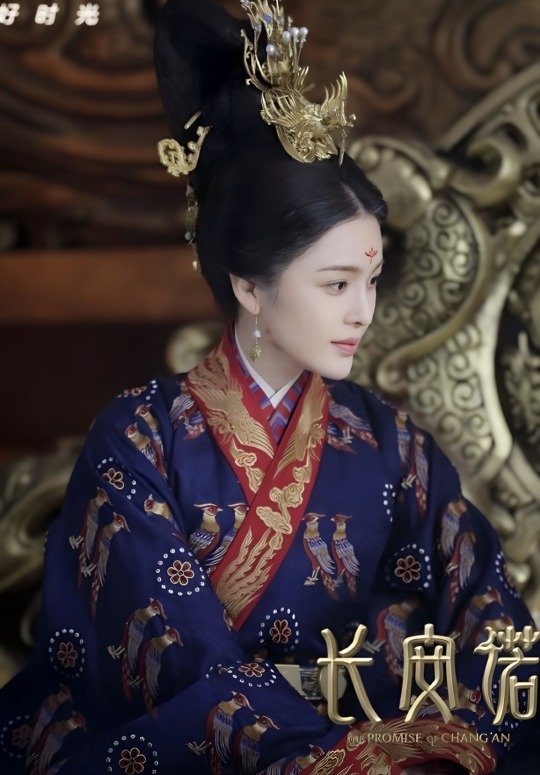



🦜 Diyi | 翟衣 🦜
Is a type of historical Chinese attire worn by empresses. During the Song (960–1279) and Ming (1368–1644) dynasties, it was considered the highest form of ceremonial clothing worn by the empress. It’s worn with Fengguan (phoenix crown). It was first recorded as “Huiyi” in the Zhou dynasty (1046–256 BC).
1st drama: Palace of Devotion 大宋宫词
2nd+3rd: The Promise of Chang’an 长安诺
4th+6th: Rebirth For You 嘉南传
5th: Serenade of Peaceful Joy 清平乐
#china#chinese culture#chinese history#cdrama#chinese drama#hanfu#hanfu restoration#east asia#fengguan#phoenix crown#song dynasty#ming dynasty#dynastic China#ancient China#Medieval China#art
156 notes
·
View notes
Text


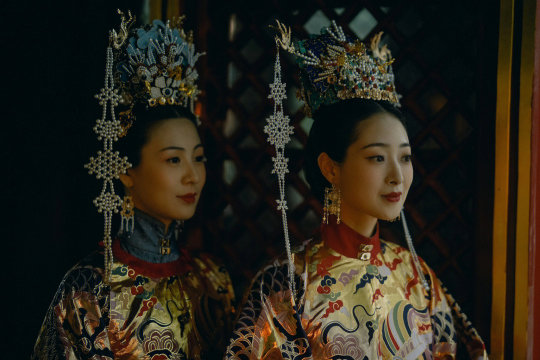


Ming Dynasty Round Neck Robe
From Song Guo Sir
113 notes
·
View notes
Text
bro man i get not everyone has read about other cultures but like, honestly, it’s so tiring that every time you see some historical artifact, you get people saying stuff like the gold cone hats cannot possibly be headgear, or that it’s “just a dildo” or otherwise being like, “stupid experts are morons and i, a total rando, am so smart”... my dude, in the modern day, they wear similar headgear in cambodia and thailand (makuta/chada)
also one of the other replies shows a photo of stone carvings of people wearing... tall conical hats. lmao like Yes it’s a hat??
even if it WAS a phallic ritual piece of some kind (it’s way too big to be a dildo) that doesn’t make it like...... that could still be something you wear on your head lol i mean you can buy a penis shaped hat today lmao
anyway
tall conical gold hat for ceremonial purposes is 100% feasible and not weird at all in the greater context of the world at large, from europe to asia. ceremonial headwear of a variety of materials and sizes including very tall and/or impractical is super common
also c’mon have you seen the pope‘s tiara??? the schifferstadt golden hat is hardly any stranger than that
people do wild capuchons for mardi gras as well
ming dynasty imperial crowns... fengguan... egyptian pschent.... yoruba oba’s crown...
anyway like obviously academia is fallible and sometimes they aren’t getting something, but that’s usually because they lack a specific expert—a leatherworker, or a seamstress, or a hair stylist
experts are crucial.... generalists are crucial.... people spend years researching this stuff, but randos on twitter obviously don’t think about that lol they just want to add the 500th “it’s a dildo” joke
ofc it’s not like i accomplish anything by being mildly annoyed by it on the internet but man, don’t you want to expand your horizons? don’t you want to know more about things???
#i realize not everyone spends all day browsing wikipedia like i do but nonetheless#it's not like that hard to imagine some kind of fancy crazy shit i mean 6 inch thigh platform boots aren't practical either#people still wear them though#nadia rambles#not a callout for not knowing about the wide variety of headgear but rather criticizing the unwillingness to learn or seek out information#when you don't know something#which is why i put links in here
1 note
·
View note
Photo





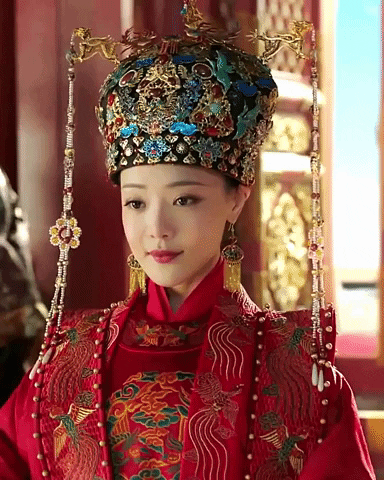
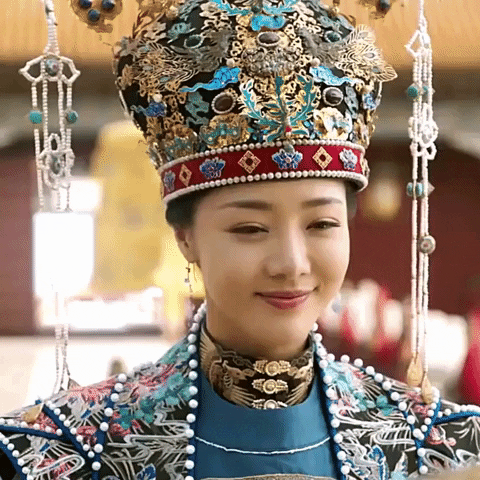

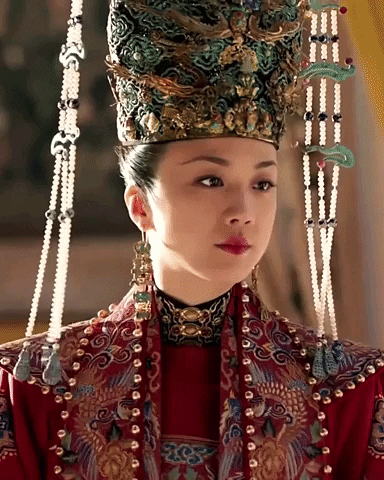

fengguan (鳳冠): pheonix crown
fengguan is a chinese traditional ceremonial headgear worn by noblewomen. these crowns were first developed during the tang dynasty and were worn till the very end of the ming dynasty. many changes were made with time, and it would be worn either by a bride on her wedding day or by an aristocratic lady on formal occasions, as an indication of her wealth and status.
the crown is decorated with gold dragons, phoenixes made with kingfisher feathers, beaded pheasants, pearls, clouds, flowers, and gemstones. the number of pearls used range from 3426 to 5449, while the number of gemstones used range from 95 to 128. depending on the number of dragons, phoenixes and pheasants, and the presence or absence of certain ornaments, there are different varieties of fengguan.
the fengguan of empresses includes the 12 dragons and 9 phoenixes crown, 9 dragons and 9 phoenixes crown, and the 6 dragons and 3 phoenixes crown. the fengguan worn by royal concubines and princesses (includes wives of princes) included the 9 pheasants crown, 7 pheasants crown, and 5 pheasants crown, which was adorned with beaded pheasants and gold phoenixes, with the number of pheasants representing the wearer’s royal rank.
from left to right: 2, 3, 4, 6, 7, 9 and 10 are from the ming dynasty while 1, 5 and 8 are from the song dynasty
#empress of the ming#cdrama#serenade of peaceful joy#cdramanet#palace of devotion#cdramaedit#cdramagifs#dynasty: ming dynasty#dynasty: song dynasty#fengguan#women in history#i had to make a post so as to calm my heart#shiyi's fengguan upset me a little too much than it should have#stuff:mine#stuff: empress of the ming#stuff: serenade of peaceful joy#stuff: palace of devotion#wihedits
851 notes
·
View notes
Photo
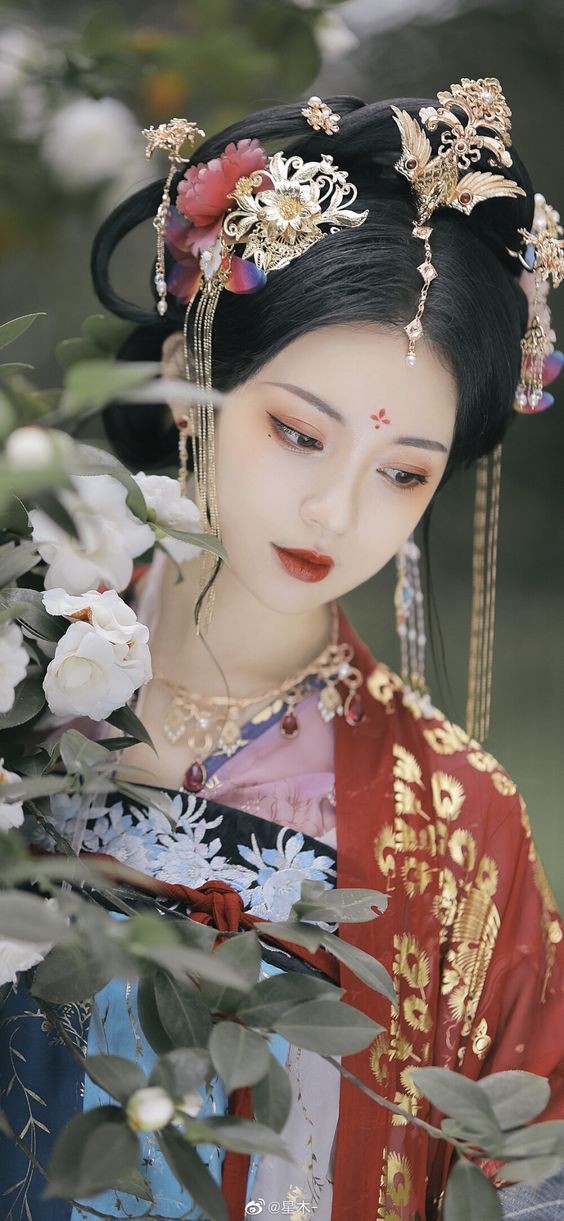
ʄǟƈɛ օʄ ɮɛǟʊȶʏ
121 notes
·
View notes
Note
Hello, I saw the last publication of The Sword and the Brocade and a question arose, what is the difference between a diguan and a fengguan? and What is the embroidered symbol on the xiapei and in some places on the skirt?
Hi.
Theorically speaking, fengguan could only be worn by the empress (the empress consort). Those worn by gaoming furen etc. were diguan. But commoners might just called this type of guan fengguan, especially for those worn for weddings. See this post by penitencebedamned that talked about the various ranks for the guan,
The most prominent distinction between the two is that fengguan has three 博鬓/Bóbìn on each side (total of six), while diguan don't. The birds decorating the guan are different too. I usually tell feng and di apart by their tail. Feng has uneven tails similar to how one would draw flame, while di has smooth tail, like real pheasants.

Also only the empress worn yellow dashan.
As for the costumes... well, I couldn't get high-resolution screenshot, and nothing on the skirt. I labelled what I can distinguish.

#cdrama#costume drama#the Sword and the Brocade#historical clothing#fengguan#diguan#feng#guan#ask#fouryearsofshades
121 notes
·
View notes